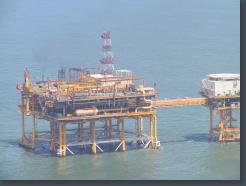SUMED links the Red and Mediterranean Seas with a capacity of over 2.5 million barrels per day. About 1.3 million bpd flowed through the system in 2018, the US Energy Information Administration said.
The pipeline is majority-owned by Egypt’s state oil company EGPC while Saudi Aramco, the Kuwait Investment Authority and Qatar Petroleum have smaller shares.
Simon Rose, co-founder and chief executive officer of Dahlman Rose & Co., discusses the outlook for seaborne trade through the Suez Canal and importance of the SuMed pipeline transporting crude…
Presented by Romano Pisciotti

Arab Petroleum Pipeline Co. has established a fully equipped product hub at their Ain Sukhna complex on the Red Sea Coast in Egypt. The hub includes both onshore and offshore facilities. The onshore facility comprises 61 product storage tanks with a total capacity of 2,125 million m³, and two 50 km long unidirectional pipelines to the city of Suez. The diameter of the individual product storage tanks varies from 21 to 59 m.
The offshore facility comprises a jetty and berths (500-160,000 DWT) including a topside pipeline and other auxiliaries. The hub includes an offshore single point mooring for very large crude carriers (VLCC), connected via a sea pipeline. The offshore facility is intended to accommodate future expansions to handle up to 24 million tonnes per annum of various products.







